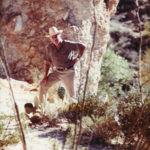
First published in The Transmission, Dartmouth ’68 Newsletter
When I was first diagnosed with Parkinson’s disease three years ago, I shared the news with my family. My sister asked if I was shaky, and I recalled the disturbing footage I’d seen of actor Michael J. Fox, who has been afflicted for decades now and seems to be in twitchy perpetual motion.
My answer: no, I’m not shaky, but I’ve learned since then that those kinds of movements and tremors are just a few of the possible symptoms of Parkinson’s.
I have definitely lost some strength and dexterity in my left hand. And I’ve experienced some unevenness in my walking gait. Several people who know me well have noticed this and commented.
Other possible symptoms include reduced facial expression, also called frozen face, hypomimia, or facial masking. I’m trying hard to keep my face — and my attitude — lively and active, with singing, storytelling, exercise, and careful attention to my general health. So far, so good.
<< See below for a list of possible Parkinson’s symptoms, from The Mayo Clinic >>
SOMETHING WRONG
I began to suspect something was wrong a couple of years before my diagnosis. Our new daughter-in-law is deaf, and Susan and I decided it would be a good idea for us to study American Sign Language. We enrolled at Berkeley City College, where several faculty members had written and published a book series known to be the “gold standard” for learning ASL.
The classes were challenging but rewarding, and we both developed some ASL fluency. As usual, though, Susan’s manual skills and general comfort with learning languages outshone my feebler efforts.
Some ASL signs are made with just the dominant hand, and some are two-handed and asymmetrical. But many are two-handed and symmetrical. It was this last group that first screamed to me for attention: I discovered that my left hand often couldn’t mimic or keep up with my right.
I didn’t think much about it, as I could fake my way doing some of the symmetrical signs one-handed. But soon I noticed that my typing was deteriorating, my keyboarding accuracy decreasing. More troubling, though: I had developed a small, occasional twitch in some of the fingers of my left hand. So I might type a paragraph, select the text, then look away for a moment. When I looked back, the selected text had disappeared, replaced by dddddddd or sssssss, because I was inadvertently holding down the D key or the S key.
Of course, this is maddening for a writer. My magnificent pearls of wisdom were being overwritten by a stupid little twitch!
Eventually, I consulted my Kaiser doctor, and he conducted a quick neurological exam during a video visit, then referred me to a neurology specialist. He told me I was in the early stages of Parkinson’s disease and prescribed a Levidopa/Carbidopa combination pill to help my brain produce Dopamine and control my symptoms. Later he added a prescription for Rasagiline.
SLOW TO ADVANCE
I met with a new neurologist recently, and she told me that when PD appears late in life (and let’s face it, fellas, we are now late in our lives), it often is very slow to advance, and most people with PD have a normal or near-normal life expectancy. She said that my symptoms could easily take another ten years to advance, at which point I’ll be 87. I think what she was trying to say politely is that, at that age, it probably won’t be the Parkinson’s that kills me.
Unlike many of you, I’m not a doctor. I might have some of the details wrong, and I’m not advocating any particular mode of treatment. But if you’re experiencing any of the symptoms on the list below, understand that they might not necessarily be inevitable consequences of aging. They may be treatable symptoms of Parkinson’s.
I urge you to consult your physician and get checked out. I know that Parkinson’s is a progressive disease, but a number of medications are available to help mitigate the symptoms. They’ve helped me a lot, so far. Without them, typing this article would be a much more cumbersome process, and tying my shoes would be a daily adventure.

My doctors have also stressed to me that regular, vigorous exercise can help slow down the progress of the disease. About a year ago, Susan and I joined a local dance class here in Berkeley affiliated with an international organization called Dance for PD®. Originally founded in New York over 20 years ago by the Mark Morris Dance Group, Dance for PD® now offers weekly, therapeutic, “research backed” dance classes at over 300 locations, in 28 countries around the world, for people with Parkinson’s, their families, friends and caregivers.
<< See articles listed below to read about some of this research. >>
DANCING
There are half a dozen class locations in New York City, and even more here in the Bay Area. The dance movements, accompanied by a live piano player, are designed to help combat the disease. We are seated for the first half of each 75-minute session. The teachers are specially trained as Dance for PD® instructors.
Olie Westheimer, director of Brooklyn Parkinson’s Group, first suggested that people affected by PD might benefit from dancing.
(She) was clear from the start that she wanted a real dance class, and this has proved to be the crucial factor in the class’s popularity. “The most important thing is that people find joy in the movement and a sense of community just as in any dance class,” said (David) Leventhal, (current Director of Dance for PD® and a founding teacher with John Heginbotham and Misty Owens).
The classes, which begin seated to increase confidence in balance and stability, move from simple point-and-flex leg exercises to sweeping sequences across the floor.
“People will stand up straight, walk with long strides with their heel hitting the ground and swing their arms — all things that are atypical of Parkinson’s,” said Carroll Neesemann, whose disease was diagnosed 11 years ago. “I don’t know if it happens to everyone, but I lose my symptoms when I’m there. And the pleasure of the experience is that it’s not a therapy session. They teach us as if we were any students, and that makes me feel good.”
The program is supported by grants and donations, so the classes are free. After a year, our class group has developed into a lovely community. I’d never been in a dance class of any kind before, and it’s not always easy. But the teachers are sweet and supportive and insist that there is no wrong way to do the movements. And the class is a lot of fun! It sparks joy on a regular basis. They also hold online classes and publish a series of videos with exercises and dance moves for Parkinson’s patients. Check them out at https://danceforparkinsons.org.
————
FROM THE MAYO CLINIC’S WEBSITE:
https://www.mayoclinic.org/diseases-conditions/parkinsons-disease/symptoms-causes/syc-20376055.
Parkinson’s symptoms may include:
Tremor. Rhythmic shaking, called tremor, usually begins in a limb, often your hand or fingers. You may rub your thumb and forefinger back and forth. This is known as a pill-rolling tremor. Your hand may tremble when it’s at rest. The shaking may decrease when you are performing tasks.
Slowed movement, known as bradykinesia. Over time, Parkinson’s disease may slow your movement, making simple tasks difficult and time-consuming. Your steps may become shorter when you walk. It may be difficult to get out of a chair. You may drag or shuffle your feet as you try to walk.
Rigid muscles. Muscle stiffness may occur in any part of your body. The stiff muscles can be painful and limit your range of motion.
Impaired posture and balance. Your posture may become stooped. Or you may fall or have balance problems as a result of Parkinson’s disease.
Loss of automatic movements. You may have a decreased ability to perform unconscious movements, including blinking, smiling or swinging your arms when you walk.
Speech changes. You may speak softly or quickly, slur, or hesitate before talking. Your speech may be more of a monotone rather than have the usual speech patterns.
Writing changes. It may become hard to write, and your writing may appear small.
————
OTHER ARTICLES:
Getting Their Groove Back, With Help From the Magic of Dance
Long-term effects of Dance for PD® on self-efficacy among persons with Parkinson’s disease
https://www.tandfonline.com/doi/full/10.1080/17533015.2017.1326390
Featured research: Studies on Dance for PD programs, programs based on our model, or groundbreaking work in the field.
https://danceforparkinsons.org/resources/research
Dance for PD: a preliminary investigation of effects on motor function and quality of life among persons with Parkinson’s disease






Great article! Nice work Bill. Captures a lot of what we go through.
Thank you, Doug!
My Partner, who is 66 years old, was diagnosed with Parkinson’s disease last year. We noticed that he was experiencing hallucinations, slow movement, disturbed sleep, and twitchy hands and legs when at rest. He had to stop taking pramipexole (Sifrol), carbidopa/levodopa, and 2 mg of biperiden because of side effects. Our family doctor recommended a PD-5 treatment from natural herbs centre. com, which my husband has been undergoing for several months now. Exercise has been very beneficial. He has shown great improvement with the treatment thus far. He is more active now, does more, and feels less apathetic. He has more energy and can do more activities in a day than he did before. As far as tremors I observe a progress, he improved drastically. I thought I would share my husband’s story in case it could be helpful, but ultimately you have to figure out what works best for you. Salutations and well wishes
My wife was diagnosed of Parkinson’s Disease at age 61. She had severe calf pain, muscle pain, tremors, slurred speech, frequent falls, loss of balance, difficulty in getting up from sitting position. She was put on Senemet for 6 months and then Siferol was introduced and replaced the Senemet. During this time span she was also diagnosed with dementia. She started having hallucinations and lost touch with reality. Last year, our family doctor started her on Uine Health Centre PD-5 formula, 2 months into treatment she improved dramatically. At the end of the full treatment course, the disease is totally under control. No case of dementia, hallucination, weakness, muscle pain or tremors. My wife is strong again and has gone on with her daily activities as I share this experience. I’m surprised a lot of PWP haven’t heard of PD-5 formula. we got the treatment from their website uinehealth centre . c om